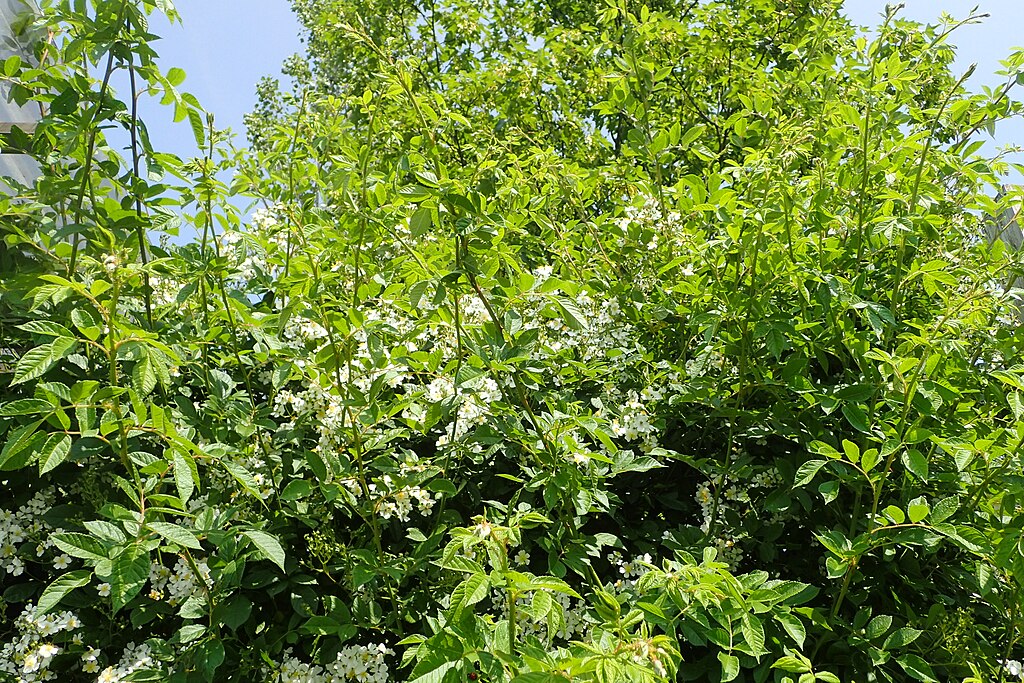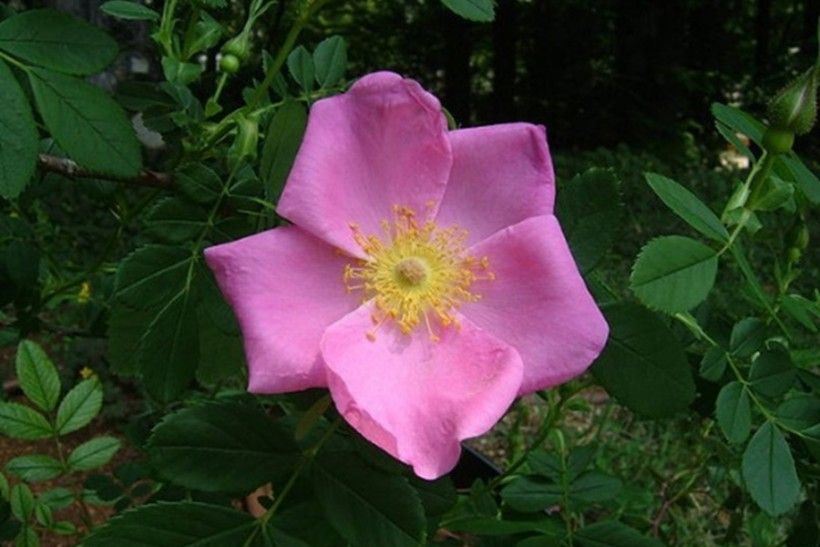Invasive Species Spotlight: Multiflora Rose

Multiflora Rose (Rosa multiflora) is a seemingly innocuous shrub that has become one of the most troublesome invasive species in North America. Initially introduced to the region for practical purposes such as erosion control and habitat enhancement, this resilient plant has since spread aggressively across a multitude of landscapes, creating dense thickets that outcompete native vegetation.
Origin
Native to East Asia, specifically China, Japan, and Korea, multiflora rose was first introduced to the United States in the 1860’s. Originally, it was used in the horticultural industry as rootstock for rose breeding and as an ornamental plant. By the 1930’s, the USDA’s Soil Conservation service was encouraging its use for erosion control and as a “living fence” to contain livestock. By the 1960’s conservationists began warning about its invasive potential, and it has since earned “noxious weed” designation in multiple states, as well as a first ranking (severe threat) on the PA Department of Natural Resources’ invasive plant list.
Characteristics
Multiflora rose is a hardy, perennial shrub known for its climbing and rambling growth habits. The plant can reach 10-15 feet in height, often forming dense thickets. Its canes, or stems, are armed with curved thorns, complicating physical removal. The leaves are compound, usually composed of five to eleven leaflets, and are arranged alternately on the stems. In late spring, the shrub produces clusters of white flowers, which give way to small red fruits known as hips by August. These hips persist into winter and are a food source for birds and other wildlife, further aiding in the plant’s spread.


A multiflora rose plant can produce up to 500,000 seeds annually, which remain viable in the soil for up to 20 years. This species is also extremely adaptable, tolerating a host of different conditions—from full sun to shade, from dry to moist climate, and between different soil compositions. These characteristics equip multiflora rose to take over in a variety of settings, including woodlands, forest edges, fields and pastures, swamp margins, and roadsides.
Control
The first line of defense in controlling multiflora rose is regular inspection to identify and address new infestations early—intentionally checking for this plant at the beginning and end of each summer is ideal. Once multiflora rose is established, mechanical methods like hand pulling, digging, and repetitive cutting and mowing can be effective, especially if done before the plant produces seeds. However, because the plant can resprout from cut stems, often chemical controls are necessary for complete eradication.
Herbicides, such as glyphosate and triclopyr are most effective when applied from July to September, the shrub’s active growing season. Stump application of herbicide immediately following cutting reduces regrowth. In agricultural settings, grazing by livestock may help control infestations, though a combination of this method with other control strategies is usually more effective.

Alternatives
Native roses offer an alternative to the invasive Multiflora Rose, supporting local landscapes while providing similar vibrant flowers and appealing scents. Rosa carolina (pasture rose), Rosa palustris (swamp rose), and Rosa virginiana (wild rose and sometimes also pasture rose), for example, are all adapted to local conditions and provide habitat and food resources to local wildlife populations.


Resources:
- PA DCNR: Native Roses Aren't Red
- PSU Extension: Multiflora Rose
- PA DCNR: Invasive Plants in Pennsylvania, Multiflora Rose
- BCMA: Support Your Local Ecosystem: Replacing Invasive Species with the Right Native Plants
- Multiflora Rose Info Sheet
Lead image credit: Famartin via Wikimedia Commons